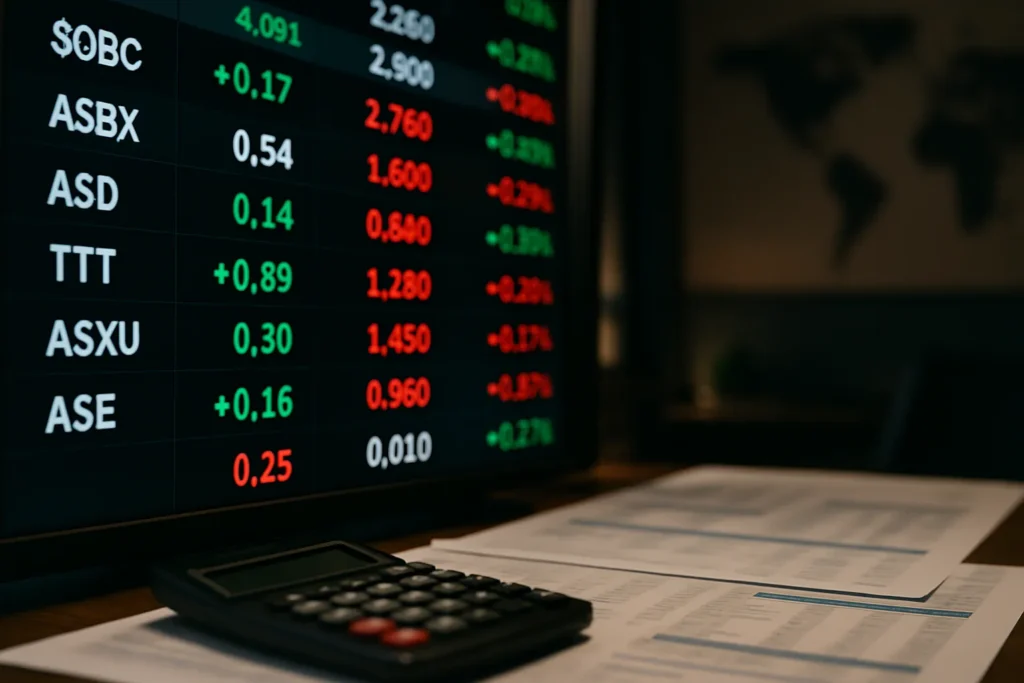The Shadow of Tariffs and the Tenuous Recovery
Uncertainty has gripped Chinese and Hong Kong stock markets as investors braced for this weekend’s pivotal trade talks between the world’s two largest economies. Both the Shanghai Composite and CSI 300 indexes nudged downward—by 0.3% and 0.2% respectively—while Hong Kong’s Hang Seng defied the bearish mood, closing near a five-week high. This jittery equilibrium comes despite President Donald Trump’s aggressive move last month to slap tariffs as high as 145% on Chinese imports, a policy echoing some of the most combative days of global trade friction seen since the 1930s. Investors are distinctly uneasy about the prospects for a near-term resolution; rather than celebrating April’s surprisingly robust Chinese export data, markets remain sobered by the friction that punitive tariffs continue to stoke.
President Trump’s headlines—ostensibly aiming to protect American manufacturing—create ripple effects far beyond either nation’s borders. Harvard economist Jane Doe notes, “Tariffs of this scope train a cold spotlight on the fragility of global supply chains, threatening both business certainty and the cost of living for ordinary people.” Despite momentary rebounds, the lasting impact is a heightened sense of unpredictability. Recent central government stimulus in China—a blend of interest rate cuts and lowered bank reserve requirements—has managed to buoy markets off their worst slumps, but the optimism is fragile, easily shaken by a single negative headline from Washington or Beijing.
Look no further than the nearly 10% plunge in Hua Hong Semiconductor’s stock following disappointing quarterly results. The episode highlights how persistent concerns about trade policy are colliding with technology’s own exposure to export restrictions and supply bottlenecks. According to Patrick Pan, equity strategist at Daiwa Capital Markets Hong Kong, “The long-anticipated stimulus has been limited so far. Even if there is a short-term rebound, doubts about a durable US-China trade deal aren’t going away.” Investor caution isn’t mere paranoia against the backdrop of this patchwork recovery.
Currency Under Pressure—The Yuan’s Calculated Weakness
Beneath the surface of share price volatility, the Chinese yuan’s recent dip tells its own complex tale. The currency slipped against the dollar as Beijing prepped its negotiating stance, with the People’s Bank of China (PBOC) setting the midpoint at its lowest since late April. In a strategic move to ensure currency stability during high-stakes talks, the central bank authorized commercial banks to facilitate foreign exchange purchases, aiming to smooth over imports of gold—a familiar haven in times of diplomatic unpredictability.
Yet, maneuvering hasn’t curbed mounting speculation against the yuan, especially in Hong Kong’s offshore markets, where the CNH Hong Kong Interbank Offered Rate plummeted to a record low. Shorting the yuan has become cheaper than at any time this spring, emboldening global hedge funds and day traders alike. According to Bloomberg, recent interventions raise questions about how far—and how long—Chinese authorities can resist natural devaluation pressures that are compounded by the ticking clock of a trade standoff. As Scott Bessent, the current US Treasury Secretary, heads to Switzerland alongside US Trade Representative Jamieson Greer for talks with Chinese Vice Premier He Lifeng, observers are watching for any cues from either side that might jolt foreign exchange or equity markets yet again.
To ordinary investors and workers alike, the currency story is more than a technical footnote. Weakness in the yuan risks higher consumer prices at home, as imported goods grow costlier—a classic regressive effect that hits low- and middle-income Chinese families first. Who ultimately pays for this currency chess match? Reprising a dynamic seen during earlier phases of the trade war, those with the fewest reserves of economic resilience find themselves bearing the heaviest burden.
“When policymakers weaponize tariffs or toy with currency values, it’s ordinary families and small businesses who feel the shocks long before governments do.”
That lesson, often forgotten amid the staccato of market headlines, remains painfully relevant as 2025’s round of US-China trade brinkmanship unfolds.
The Global Stakes of Diplomatic Paralysis
What does this climate of caution mean beyond headline risk and day-to-day price swings? For one, it fuels deeper skepticism about the effectiveness of economic nationalism as a cornerstone of foreign policy. Protracted US-China tension does more than spook investors—it chills multinational investment, slows technology transfer, and jeopardizes job security on both sides of the Pacific. According to Center for Strategic and International Studies scholar Zhi Ming Chen, “The longer these discussions drag without resolution, the more global GDP suffers. Even a 0.2% hit to growth, projected by the IMF if current tariffs stay, translates into millions of jobs lost worldwide.”
Beyond that, strategic ambiguity has bred an innovation freeze, particularly in sectors like semiconductors, clean energy, and artificial intelligence. How can American and Chinese firms—let alone startups—plan for the future when regulatory frameworks and tariff regimes are in constant flux? Small wonder that forward-looking investment is stalling, as perpetual uncertainty saps not just profits, but morale and institutional trust.
It’s a moment that reveals the gulf between progressive and conservative approaches to international economic policy. The current conservative playbook, with its compulsive reliance on tariffs and shock-value negotiation tactics, has delivered surface-level soundbites at the cost of durable solutions. Multilateral engagement, respect for established trade norms, and a commitment to shared prosperity have too often been sacrificed for the spectacle of “winning.” When policymakers ignore these lessons, working people and small business owners are left to pick up the pieces.
The hope for a meaningful breakthrough at this weekend’s talks may be faint, but it underscores a larger truth: in a deeply interconnected world, stability, transparency, and dialogue matter far more to everyday prosperity than bluster or brinkmanship ever could. Global dependence on smooth trade flows is not an abstraction but a lived reality for millions. The caution we’re seeing in markets is a rational response to a political climate that has, for too long, treated international trade less as a shared opportunity and more as a battleground.

